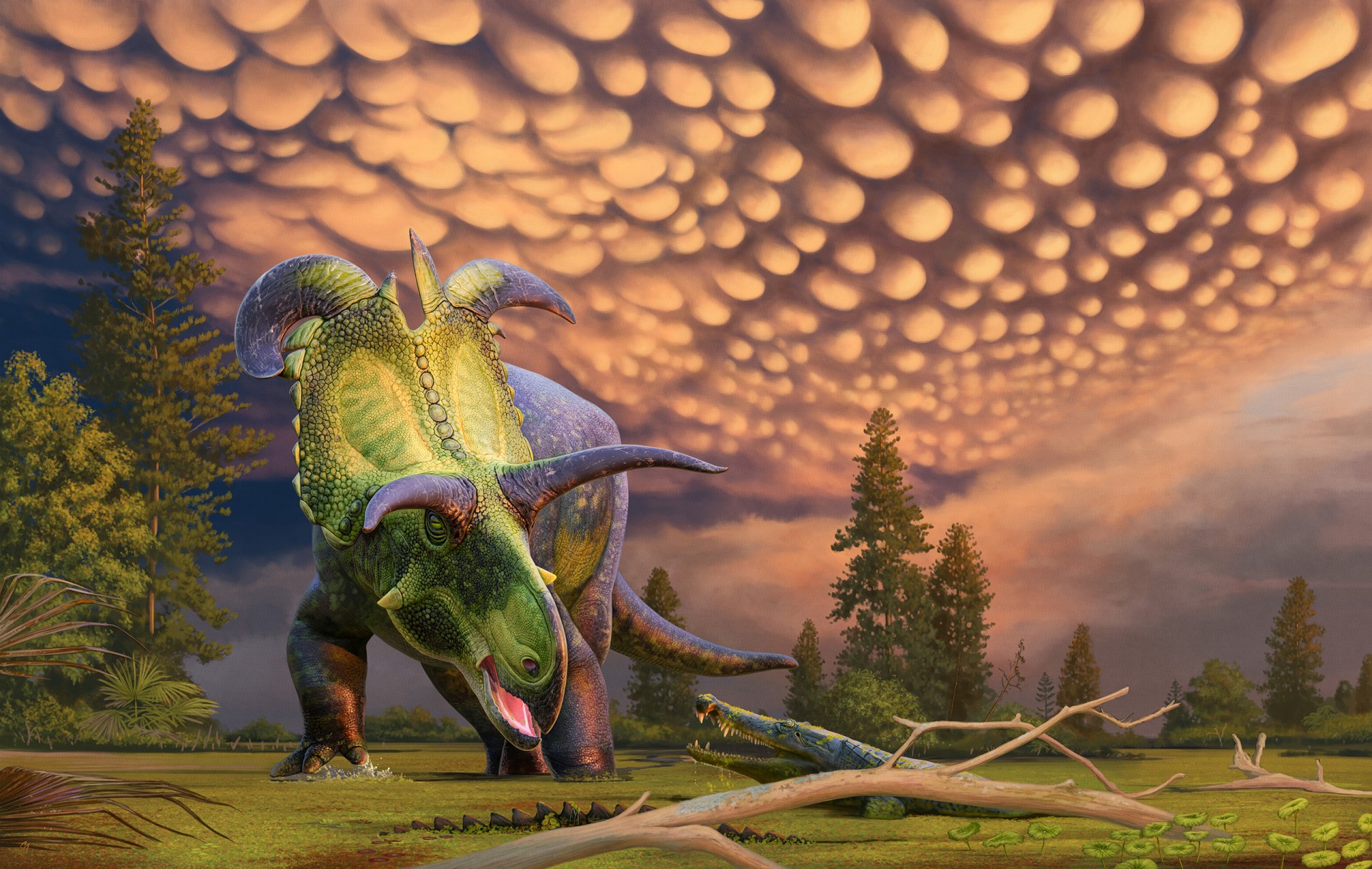
About 78 million years ago, a stocky dinosaur with a rhinoceros-like body and large frill studded with horns roamed a swampy area of land in what is now northern Montana. Scientists discovered its fossilized remains in 2019 and recently published their findings. Its name, Lokiceratops rangiformis, is a nod to the Norse god Loki and the dinosaur’s uneven horns. In full, the name translates to, “Loki’s horned face that looks like a caribou.”
Lokiceratops is likely the fifth discovered member of a group of dinosaurs called ceratopsian dinosaurs. This group also contains Triceratops, the well-known three-horned dinosaur that roamed what is now western North America between 68 and 66 million years ago. According to Mark Loewen, one of the paleontologists involved in the discovery, horned dinosaurs were likely using their horns to either attract mates or threaten their competitors.
With just one specimen uncovered thus far, some paleontologists disagree that Lokiceratops is truly a new species. They argue it may simply be another ceratopsian dinosaur with slightly different horns and at a different life stage than previously documented. This disagreement is a key part of the scientific process and will probably be resolved when more Lokiceratops fossils are discovered.
While we don’t have a Lokiceratops fossil at Frost Science, our new paleontology exhibition, The Dig, is now open! Visit today to learn about the science of paleontology and how Frost Science Curator of Vertebrate Paleontology, Dr. Cary Woodruff, finds and studies fossils. With a variety of interactive and digital components to explore, you’ll have a chance to explore the world of dinosaurs—including Triceratops—in detail and experience life as a paleontologist.
We’re open until 7:00 p.m. daily now through August 10, 2024. See you in The Dig!
Top image: © Andrey Atuchin for the Museum of Evolution in Maribo, Denmark.